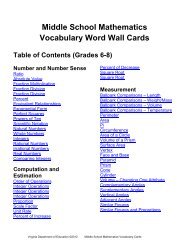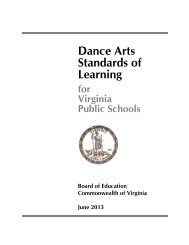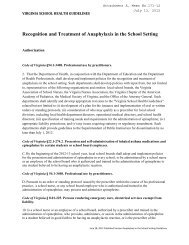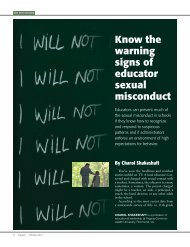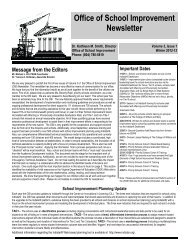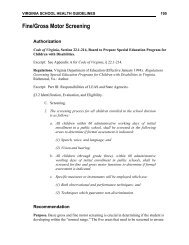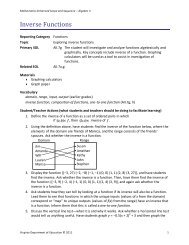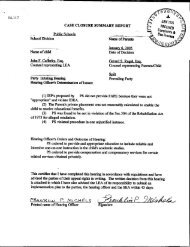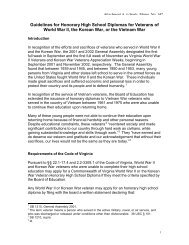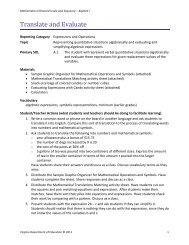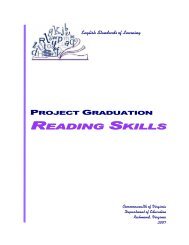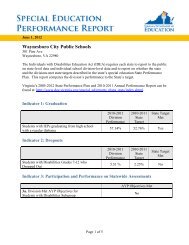What Makes Something Alive - Virginia Department of Education
What Makes Something Alive - Virginia Department of Education
What Makes Something Alive - Virginia Department of Education
You also want an ePaper? Increase the reach of your titles
YUMPU automatically turns print PDFs into web optimized ePapers that Google loves.
although some swans lost their transmitters along the way or were not successful in<br />
completing the migration. It is critical to know where migratory species such as tundra<br />
swans migrate so that both <strong>of</strong> their habitats, summer and winter, can best be managed to<br />
protect the health <strong>of</strong> the population.<br />
• The tundra swans that spend the winter along the east coast in the Chesapeake Bay region<br />
nest in tundra habitats across northern Canada and Alaska in the summer. The swans travel<br />
a long distance between these two locations. Sometimes the swans take a break along the<br />
way, either on the trip north while they wait for the spring thaw, or on the way south when<br />
they are with their young and need to stop and rest. Waterfowl, such as geese, ducks, and<br />
swans have historical staging areas where large numbers <strong>of</strong> birds gather before making the<br />
next portion <strong>of</strong> the trip. These areas usually have abundant food and water supplies that<br />
can sustain a large flock. Swans feed on grasses, aquatic vegetation, and small grains such<br />
as corn, wheat, and soybeans. The U.S. Fish and Wildlife Service, and the state wildlife<br />
agencies across the United States have established numerous wildlife refuges in some <strong>of</strong><br />
these important staging areas.<br />
• You can see the migration paths, nesting locations, and diaries <strong>of</strong> three tundra swans that<br />
were captured and tagged in <strong>Virginia</strong>, on the <strong>Department</strong> <strong>of</strong> Game and Inland Fisheries<br />
Web site at http://www.dgif.virginia.gov/wildlife/swan/index.asp. There are maps <strong>of</strong> other<br />
swans‟ migration paths from previous years in the archived section.<br />
• Measurement is a comparison <strong>of</strong> an object to another object.<br />
• Nonstandard measurement is measuring with an object that is not a standard measurement<br />
tool (e.g., paper clips, unifix cubes, Popsicle sticks) to compare to an object.<br />
• Measurement <strong>of</strong> a unit is the distance between each unit.<br />
• Linear measurement measures length and height.<br />
• Math should be taught through inquiry and real-world applications. Students should<br />
construct mathematical ideas through classroom discussions. When appropriate,<br />
development <strong>of</strong> new concepts may be necessary.<br />
Student Learning Expectations<br />
• Identify land and water habitats (fresh water, salt water, forest/woodland, wetland).<br />
• Identify how animals have to adapt to seasonal changes and climates within their<br />
surroundings.<br />
• Describe behavioral, physical, and chemical adaptations animals make in order to survive<br />
(e.g., migration, hibernation, camouflage, adaptation, dormancy).<br />
• Collect data by measuring length (meter, foot), area, and temperature.<br />
• Graph and analyze data collected.<br />
Procedure<br />
NOTE: The procedures in the topic sessions may be divided into several different lesson<br />
periods. Each session may take more than one class lesson to complete.<br />
175<br />
<strong>Virginia</strong> Animals and their Habitats<br />
Topic 6



